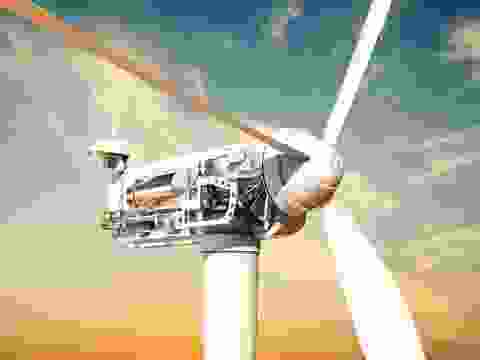Greenland
Critical minerals, policy, and the energy transition
The Energy Transition in Greenland
Greenland, an autonomous territory within the Kingdom of Denmark, is undergoing a significant energy transition, shifting focus from fossil fuels to renewable energy sources such as wind, solar, and hydropower. This shift is driven by the critical need to tackle climate change and foster a sustainable economic future. Central to this transition are critical minerals such as lithium, cobalt, nickel, and rare earth elements, which are vital for producing batteries, electric vehicles, and green technologies. Greenland's role in the global energy and climate objectives is becoming increasingly prominent, highlighting the need for a stable supply of these essential minerals. Greenland is at a critical juncture, advancing economic growth while safeguarding its environment and cultural heritage in its stride toward a sustainable, low-carbon future. Greenland aims to forge a resilient, equitable, and environmentally conscious path forward by focusing on responsible local mining, ethical procurement, and innovative technology. A 2023 survey revealed that Greenland possesses 25 of the 34 minerals identified as critical raw materials by the European Commission.
Latest news and insights
Stay ahead in the energy transition with SFA (Oxford)’s cutting-edge insights into how critical minerals, geopolitics, ESG, and supply chain risks are reshaping global markets and influencing Greenland’s strategic priorities in the Arctic.
Greenland's international economic, trade, and security alliances
Geopolitics and Greenlands energy transition
Greenland’s energy sector is transitioning towards greater use of renewable sources, though petroleum remains part of its energy mix. While coal has historically been present, it is no longer a priority for future development. Solar power is being explored as a viable option despite the challenges of seasonal extremes, and wind energy shows strong potential, particularly in coastal and inland areas. Hydropower is already in use and continues to play a key role in the region’s renewable energy strategy. Biomass has limited applications but could be utilised locally in specific areas. As Greenland reduces its reliance on fossil fuels, its shift towards renewable energy is expected to accelerate.
The global demand for critical minerals has elevated Greenland's geopolitical significance. Countries and corporations are increasingly interested in Greenland's resources to secure supply chains for the burgeoning green economy. However, Greenland faces the challenge of balancing economic growth with environmental preservation and cultural heritage. The development of mining projects has encountered opposition from local communities concerned about environmental impacts. For instance, the Kvanefjeld project, one of the world's largest rare earth deposits, was halted due to environmental concerns and a subsequent ban on uranium mining.
Greenland’s energy transition has profound geopolitical implications, as the world’s major economies seek secure supplies of critical minerals essential to renewable energy and advanced technologies. Its vast mineral reserves make it a strategically important region, drawing interest from global powers, particularly the United States, the European Union, and China.
The United States has long recognised Greenland’s strategic significance, both as a resource hub and a critical location for Arctic security. In December 2024, former US President Donald Trump renewed his controversial proposal for the United States to purchase Greenland, citing concerns over growing Chinese and Russian influence in the Arctic and the island’s untapped reserves of critical minerals. This proposal, like his previous attempt in 2019, was firmly rejected by Greenlandic and Danish officials, reaffirming Greenland’s commitment to self-governance and its territorial integrity.
Despite the outright rejection of a US purchase, American interest in Greenland continues to grow. The US has allocated funding for geological surveys, infrastructure investment, and strategic partnerships to secure access to Greenland’s mineral wealth. Furthermore, the establishment of diplomatic and economic ties reflects Washington’s intent to counter China’s increasing involvement in the Arctic and the rare earths sector.
The United States has intensified its focus on Greenland's strategic importance. In March 2025, Vice President J.D. Vance visited the Pituffik Space Base in northern Greenland, highlighting the island's critical role in Arctic security. This visit, described by Greenland's outgoing Prime Minister Mute Egede as "highly aggressive," underscores the growing geopolitical tensions in the Arctic region.
In response to these geopolitical dynamics, Greenland's political landscape has evolved. The recent election saw the pro-business Demokraatit Party, which advocates for gradual independence from Denmark and supports mining ventures, gaining significant support. This shift could influence future policies regarding resource extraction and international partnerships.
The European Union recognizes Greenland as a crucial supplier of critical raw materials, aiming to reduce reliance on Chinese-dominated supply chains. In November 2023, the EU and Greenland formalized a Strategic Partnership on Sustainable Raw Materials Value Chains. This partnership focuses on developing Greenland's mining sector by attracting investments, exchanging knowledge, and fostering local skills development, all while adhering to environmental and social governance (ESG) principles.
China, on the other hand, has previously attempted to invest in Greenlandic mining projects, particularly in rare earths. However, geopolitical concerns and Greenlandic policies limiting foreign control over strategic resources have curtailed Beijing’s influence. Despite this, China remains a competitor in securing Greenland’s mineral resources, prompting Western nations to strengthen their presence.


Source: SFA (Oxford)




Meet the Critical Minerals team
Trusted advice from a dedicated team of experts.

Henk de Hoop
Chief Executive Officer

Beresford Clarke
Managing Director: Technical & Research

Jamie Underwood
Principal Consultant

Ismet Soyocak
ESG & Critical Minerals Lead

Rj Coetzee
Senior Market Analyst: Battery Materials and Technologies

How can we help you?
SFA (Oxford) provides bespoke, independent intelligence on the strategic metal markets, specifically tailored to your needs. To find out more about what we can offer you, please contact us.































